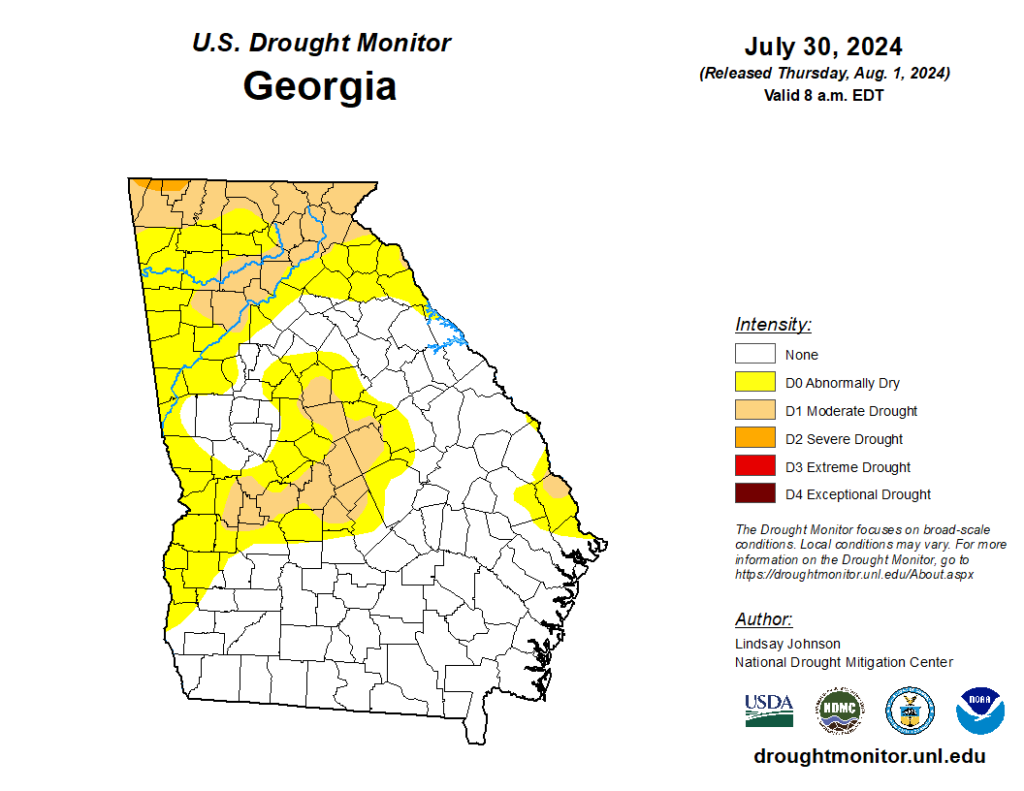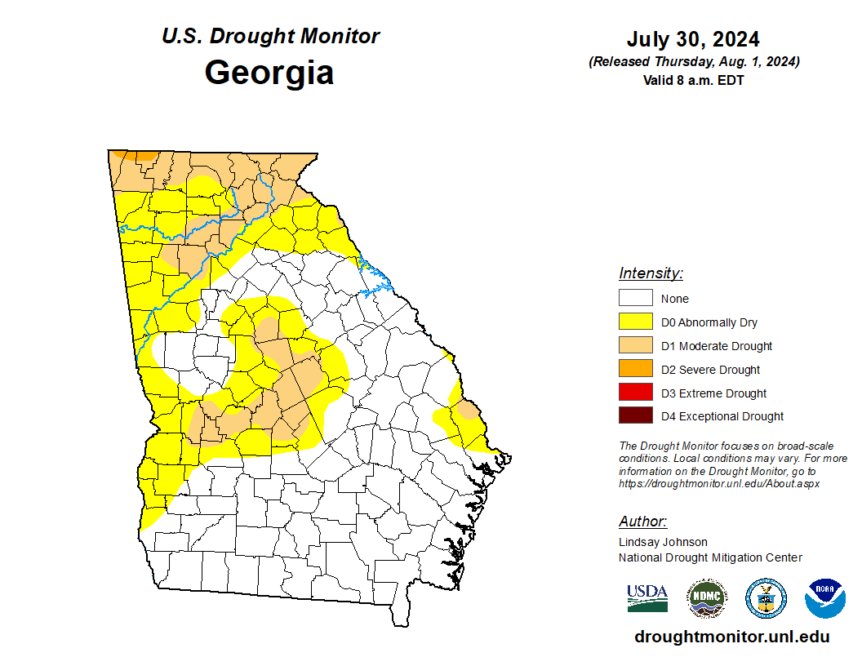
By Clint Thompson
The most recent release of the U.S. Drought Monitor paints a dry picture for specialty crop producers in Georgia, especially in the central and northern regions of the state, where abnormally and moderately dry conditions are prevalent.
That’s beneficial for fruit and vegetable growers who are preparing for their fall crops and are challenged by increased disease pressure this time of year, said Tim Coolong, associate professor in the University of Georgia College of Agricultural and Environmental Sciences.
Unlike row crop producers, most specialty crop farmers prefer dry weather because of their access to drip irrigation.
“I think in the fall in most vegetable crops in Georgia, you’re concerned with disease, whether it’s a downy mildew or some of the other pathogens; in cucurbits and so on, they’re just elevated in the fall. Disease pressure is typically much higher going into the season,” Coolong said. “Other farmers don’t particularly care for drought. It’s obviously problematic, but for most vegetable farmers, because they irrigate regularly any way, they kind of prefer to have it a little bit dry.”
The drier the better, though that may be difficult in the southern region of the state when Hurricane Debby moved through North Florida and Southeast Georgia on Monday.










